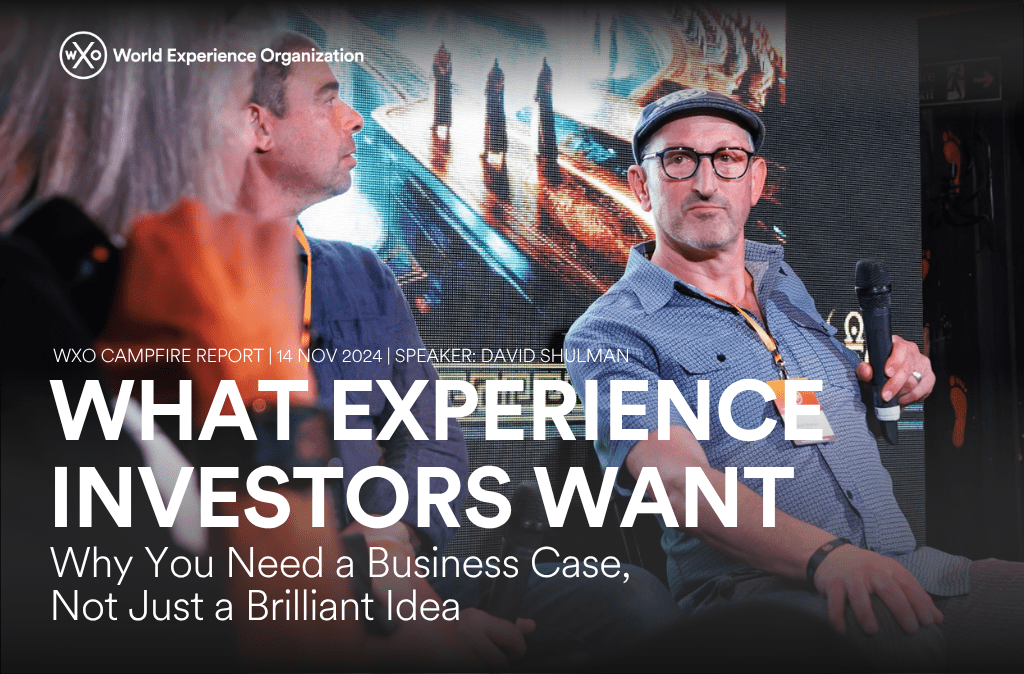It’s the killer question: how do you get funding for your experience?
If you work in experiences and want to build your own, it’s not enough just to have a brilliant creative idea. You have to also understand the financial model that will get investors on board and open the door to getting your experience made – and hopefully thriving.
David Shulman is a CFO with a creative streak and a business-minded artist who’s been in the creative industry for 14 years and has a background in corporate finance, spanning VC-funded startups, public and private companies, nonprofits and foundations.
As the Co-Founder & CFO of Sierra Whiskey Entertainment – known for producing live and virtual events and developing original cross-platform IP – David brings deep insight into the commercial realities behind immersive experiences and audience engagement. Sierra Whiskey looks to mitigate risk, have a stake in the outcome of the work, and ultimately help build a pathway for new experiences to get them reviewed, financed, produced, and distributed – something that doesn’t yet exist in the Experience Economy. (See also Feature Immersive Entertainment: How To Build A Sustainable Immersive Business.)
David also serves as CFO and Partner at Brilliant Work LLC, helping steer IP development, strategic partnerships, and experiential investments.
In this Campfire – a masterclass in how to get your experience investor-ready and build an investment strategy – Shulman revealed how to:
- Prepare for a funding round
- Position your offer in the spectrum of offers investors are looking at
- Decide on your financial model
- Find the right investors
- Structure a deal
- Prove to the investor that they will get their return
We’ve created a Campfire Report based on David’s talk. Free to download, it’s packed with actionable insights, tips and advice straight from David along with a full transcript of the session.
Fill in the form below to receive your free Campfire Report:
How to watch this Campfire:
WXO members can watch the recordings of this and 100+ Campfires as part of their membership.
About WXO Campfires:
🔥 Every week, WXO runs two online Campfires – intimate, informal, insight-rich sessions with the brightest minds in the Experience Economy – because we believe experience matters.
🤔 Members get to put their questions directly to expert speakers as well as network with experience professionals from over 40 countries.
🎓 Previous speakers have included the likes of Joe Pine, Kevin Williams, Laura Hess, Heather Gallagher, Bob Cooney, Pigalle Tavakkoli, Lou Murray and many more
🤯 Campfires have covered everything from real-time brain measurement to rave culture, sound therapy to AI storytelling, Minecraft to Elvis.
To join the WXO, please head to our Join page.
The WXO is a global home for the leaders, shapers and doers in the Experience Economy. As a member, you’ll get:
🔥 Live access to Campfires like this one, with the chance to put your questions directly to expert speakers
🎥 Unlimited access to our on demand library of over 100 Campfire recordings
🌍 A network of 1,000+ experience professionals from over 40 countries
🌍 Connect with members from such brands as AREA15, Secret Cinema, Disney, Meow Wolf, Layered Reality, Luna Park, Moment Factory and many more





